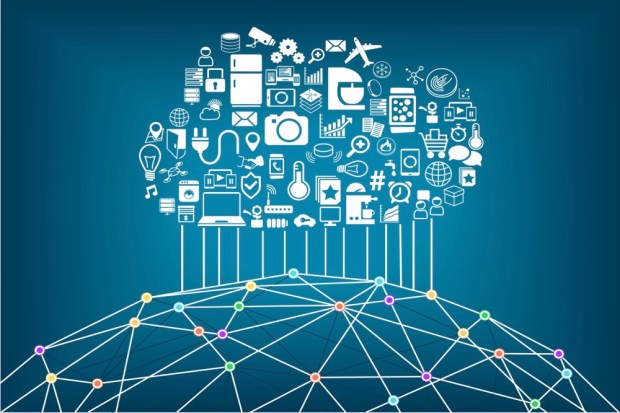How Lipstick Plus Payments Equals The Internet of Things

Let’s go back for a minute to the year 1999.
It was just about a decade years after Tim Berners-Lee gave people the ability to actually use the Internet via World Wide Web.
171 million of the 6 billion humans on the planet were using the Internet.
And 51 percent of CEOs said that the Internet probably wouldn’t have a big impact on their business.
At 1 year old, Google was practically a newborn.
It was also the year that Kevin Ashton first coined the term “The Internet of Things” — a term no one would really begin to internalize for more than a decade. A term that’s now, in 2016, inspiring how companies use the Internet, new technologies, software, devices and the cloud to make the world more efficient.
Just like Berners-Lee, Ashton could not predict the course that IoT would take. Even as an early adopter of technologies, what these two innovators share is the intellectual curiosity and vision to pursue a concept that sounded “crazy” or even “dumb” to others but they believed could deliver great value by making information more accessible — and actionable.
“An innovator is someone who sees something that isn’t the norm,” Ashton said March 16 as part of the opening fireside chat at Innovation Project 2016 . He told MPD CEO Karen Webster that morning, “but you have to be careful. … Just because everyone thinks your idea is dumb, doesn’t mean it’s great.”
“There are plenty of lunatics on the Internet,” he joked. But on the flip side? “Just because they think you’re crazy, doesn’t mean you are,” he added.
It also doesn’t mean you’re Galileo (who everything also thought was crazy).
As the story goes for Ashton and IoT, the inspiration behind the term and concept was born the same way so many other inventions come about. A creative mind comes up with a problem that needed solving. In this case, Ashton — as an assistant brand manager at Procter & Gamble — was in charge of the color cosmetics business.
The problem? One particular shade of lipstick was moving off the store shelves faster than others. But it wasn’t because it was out of stock in the warehouse; rather, there was a lack of electronic communication between the supply chain and retailer to get stock shipped from the warehouse to the retailer in a timely fashion.
The solution?
Installing a microchip in the lipstick packaging and an RFID antenna on the shelf under the lipstick assortment so that data from the lipstick package could alert store management to what was – or more appropriately – wasn’t on its shelves. This technology capability gave Ashton the “eyes” on the shelf that a computer just looking at data on a spreadsheet could never see.
His inspiration?
Chips in cards – (didn’t we tell you that payments is at the core of all things innovation?).
Ashton’s innovation eventually became the inspiration that was fully born via the Auto-ID Center at MIT. This also laid the groundwork for more sophisticated barcodes, NFC, QR codes, etc.
“The idea behind the Internet of Things is really to enable computers and information technology to gather their own information — which was difficult to explain in the 1990s because the paradigm of information technology in the 21st century was really keyboards. What the keyboard represents is the fact that computers get their information from us — or they used to.”
What it all came down to was determining what would happen if computers were simply given their own senses to gather information for themselves (sounds so simple in 2016, right?) But in 1999, Ashton still had to convince people who were still getting used to the concept of the “Internet,” that it also had a whole lot of potential when you started talking about the “things” that technology could enable.
Hence, The Internet of Things was born.
Still. the concept of Internet and especially Wi-Fi was foreign to so many. Cellphones were still not fully mainstream, let alone smartphones. But Ashton knew he had the paradigm and framework for a good idea.
What he couldn’t foresee, however, was the “rapid development of this technology,” along with why and how it would ramp so quickly. Which brings us to what inspired the theme of Innovation Project 2016: “Payments at the Edge.”
And for any innovator not sure which direction to leap next? Ashton has one piece of advice: “That edge is a literal place, and that is where your best creations are going to begin.”
Even if it starts with something as seemingly simple as selling lipstick better.
“Computers couldn’t see what was going on in the store,” Webster noted in their conversation, and IoT became the “technology that would basically be eyes on the shelf.”
And how items move off that shelf is important, especially when you can tap into the data of how it moves.
“It’s easy to retreat to an abstract view of business, but the reality of your business is what’s going on at that shelf in that grocery store,” Ashton said.
In the end, Ashton advises, embracing new theories like he did when he created the concept behind The Internet of Things is all about managing and understanding the consequences. The consequences if everyone hates your idea, and the consequences if it takes off beyond expectations. And all the consequences that may come as a result of an innovation that, on the surface, appears to be only good.
Like the conversations around security concerns that now accompany the conversations around IoT. But just like when Berners-Lee’s World Wide Web first came around, innovations take time to fully reach their potential.
But the fun of it all?
“Watching it unfold,” Ashton says.
